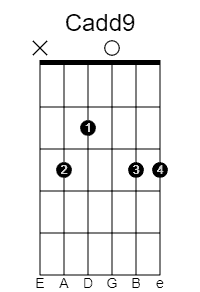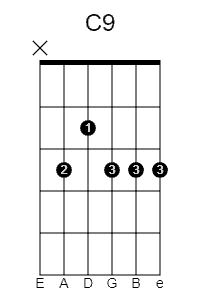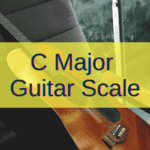Let me take you on a trip through time all the way to the roaring ages of RnB.
Yes, this musical style has made people dance for the past seven decades, giving the world hit after hit.
Moreover, it has been well nurtured by artists the size of Otis Redding, Mariah Carey, Michael Jackson, TLC, The Supremes, and the list could go on forever.
Today, we’re traveling through time and space straight to the foundations of this musical style to find out what’s the thing that has made it everybody’s favorite for so long.
So, get on your platform shoes, put on your best colorful shirt, and hit the hairdresser because you have a date with RnB.
Ready? Let’s get that groove on!
What’s RnB? A Tiny Timeline
Let’s start right from the beginning by defining what RnB is.
For that, we need to race our DeLorean at 88 miles per hour and go straight to 1943 when Jerry Wexler from Billboard Magazine replaced the term “race music” with the term RnB.
As you might notice, calling a certain musical style “race music” was kind of offensive (and still is).
Therefore, the growing, grooving, hip, and catchy mix of soul, gospel, jazz, blues, and African music that was rising from the urban spaces in the big cities, fueled mainly by the African American population, which received this generic name as far back as the 1940s, changed to RnB.
This musical style became a vessel to express many of the difficulties this population went through, especially in the ‘50s.
Moreover, it became the music that also expressed the joy and party vibe reigning in the urbane settlements of big cities.
By the ‘70s, the splendor and grandiloquence of the decade impacted heavily on RnB giving birth to big bands that included two guitars, saxophones, backing vocals, and, of course, audacious, wild, and colorful outfits.
By the ‘80s, artists like Michael Jackson took pop elements and mixed them with classic RnB in a metaphorical blender.
The results of that mix are what we know as RnB today.
Furthermore, the style kept on changing and assimilating elements to accommodate the boy and girl bands of the nineties, the Neo Soul movement of the early 2000s, and its recent mixture with electronic and world music.
We can say, without a shadow of a doubt, that this is a glorious era of RnB with a plethora of artists to choose from and enjoy.
Believe me, this is a golden time to be an RnB fan and/or player.
Let’s see some of the rules before grabbing your guitar.
Making Room for the Groove in 3 Steps
As you might know, the absolute governor of RnB isn’t guitar but groove.
Where does groove come from; can I buy it at the supermarket? Well, it’s not something you’ll find on a shelf, but the outcome of the interplay the rhythm section of the band can create.
Perhaps, the most common scenario is a mammoth, groovy bass line locking in with the kick drum to make people dance and move.
What about adding to that some melodic brass instruments? Well, that’s what we call the groove.
Now, if we get very specific, the kickdrum and the bass occupy a sonic space in the mix. Let’s say they take up to 350Hz in your equalizer.
This means that, if you use the low-end on your guitar, you’ll be messing with the groove.
You absolutely don’t want to mess with the groove; the groove is king.
So, let’s see three great strategies to get out of the groove’s way while adding some spices to the recipe with some great guitar playing.
Chord Embellishments
What we’re about to see can come to you as embellishments but also as extensions. You’re about to learn how to add a single note to embellish a chord and how to transform a chord into an extended version.
So, the first part is something we note as “add9” for example.
That means you’re playing a regular chord with an added 9th.
So, for example, if you’re playing the quintessential C major chord and you add the 9th, you must count 9 notes above your initial C.
With a simple sum, you can get to that D note. What happens if you add a D note to your C chord? Well, it sounds different, prettier, and more complex.
You can add any note you want to any chord you want (including minor and diminished) and do some trial and error.
What I recommend is going for the 7th, 9th, 11th, and 13th.


The second part requires a different effort on our side as guitar players because, yes, you guessed it; we only have four fingers on our fretting hand!
Therefore, for example, if you want to play a C major 9th, C minor 9th, or C9 (which means C dominant 9th) you have to take out a note.
The note we’re removing from the formula is always the fifth because the third makes a chord major or minor.
So, if we want to make a C major chord, we use the root (C), the third (E), and the fifth (G).
When we transform that into a seventh chord, we add the seventh degree of the scale (B).
Now, if we want to create the C9 chord, we have to use C – E – B – D.
That’s right, we’re leaving the fifth out.




Chord Inversions
Chord inversions are paramount for playing RnB.
Let me give you a piece of advice and a voice of warning: you’re going against most of what you learned about other musical styles.
Yes, we need to make the guitar smaller, sonically speaking, but more interesting at the same time.
Therefore, what we can do is simply change the order of the notes we have in our chord.
For example, if we think of C major, we need to think about C – E – G, right? Well, what if we can find those same notes in a higher register? Furthermore, let’s think of a C7 (C – E – G – Bb) in a higher register.
The first example is an alternative version of C7 that still has the C as the lowest note of the chord but in a much more treble-friendly location.

The second example is an inversion because the lowest note of the chord is that low G on the fifth string.

Play them both and try to see the differences in the sound to make the most out of them.
Perhaps, the first example is more for strumming a tight pattern and the second for arpeggiating because of that mute string in the middle.
Chord Transformations
I know that the title seems like it is out of the Frankenstein book by Mary Shelley, but it’s not.
Performing chord transformations can help you move smoothly throughout the fretboard economizing the movements of your fretting hand.
For example, if you were to go from a C major (C – E – G) to an E minor (E – G – B), you could just move your finger that’s on the C to play a B and you’ll be playing an E minor.
You might be thinking “Duh! I already know that brainiac!” But what you might not know is that instead of shifting your entire hand to play E – G – B, you can just play B – E – G, thus, moving a single finger from the previous structure.
Check this version out, but feel free to use the notes on the chords’ triads to come up with your own transformations.


21 RnB Chord Progressions
1. I – V – bVII – IV
2. I – III – IV – III – bIII – II
3. I – vi – IV – V
4. ii – V7 – iii7 – vi7 – I7
5. IV – iii – VI – VI
6. I – I – V7 – V7 – I – I – IV – I – I
7. vi – iii – IV – ii
8. iv7 – i7
9. IV – V – iii
10. i7 – ii7 – i7 – ii7
11. IV – vi – V
12. i7 – IV7 – VII7 – VI
13. ii – V – I
14. I – vi – iii – V
15. I – vi
16. i – VI – iv – iv – #VII7
17. vi – bVII
18. IVmaj7 – ii7 – iii7 – vi – II – II – I6 – IV
19. I – IV – I – iii – vi – IV – V7
20. I – I – vi – vi – IV – IV – V – V
21. I – I – V – V – ii – ii – IV – V
The Bottom Line
As years go by, this morphing style called RnB is always surprising us with new talents, chords, sounds, and songs that are ready to make history.
I know it all sounds a tad grandiloquent but a journey around the world starts with a single step.
Consider this article as your first step toward becoming a great RnB player.
Believe me, the road ahead is full of amazing moments, great fun, and a lot of dancing.
So, practice a lot and mess with the chords until you make them tell your story; after all, RnB is all about giving your heart and soul to every note.
Happy (RnB) playing!

Hello there, my name is Ramiro and I’ve been playing guitar for almost 20 years. I’m obsessed with everything gear-related and I thought it might be worth sharing it. From guitars, pedals, amps, and synths to studio gear and production tips, I hope you find what I post here useful, and I’ll try my best to keep it entertaining also.





